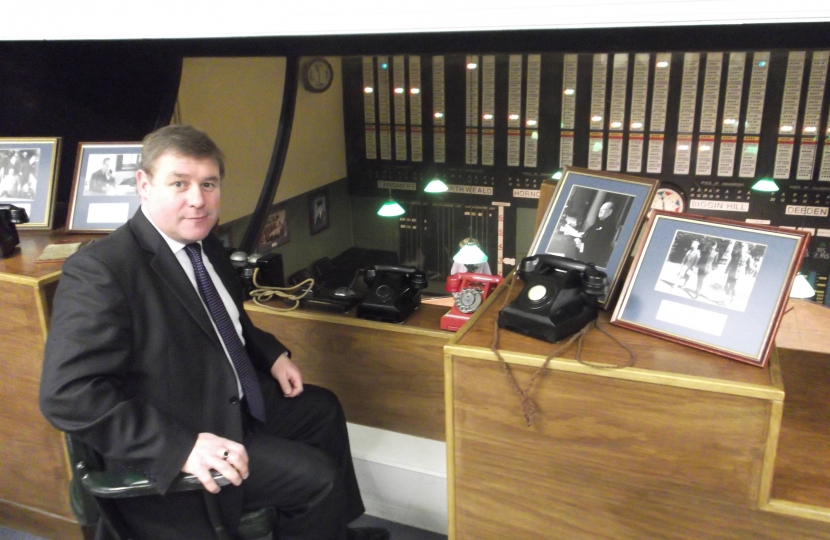
As part of his role as Veterans Minister, Mark has responsibility for military heritage and so he decided to visit the bunker to see for himself how well it has been preserved. While on his trip, Mark was also briefed on plans to build a new visitor centre nearby in order to allow future generations, including school children, to understand the vital role that this installation played in helping to keep Britain free from Hitler’s Germany.
Mark was taken on a tour of the Bunker by the Curator Dan Stirland and was shown how radar plots and other information, including from the Observer Corps, was brought together in the bunker so that RAF commanders at the time could allocate squadrons of Spitfires and Hurricanes to intercept incoming German bombers. During the war, some of these aircraft operated from what was RAF Rochford (and is now Southend Airport) and were guided to their targets by radar masts from around the country, including one which was located at Canewdon, near Rochford.
Commenting on his visit to the 11 Group bunker, Mark Francois said:
“This bunker at Uxbridge is truly historic as it was at the very heart of Britain’s air defences during the Battle of Britain. Had we lost the Battle of Britain and had Hitler successfully invaded our Islands, then the whole world could be very different, so it is not an exaggeration to say that this small underground room played a key role in helping to keep our country, and indeed much of the world, free. For that reason it is very important that this site be preserved for future generations to enjoy and understand and, having had the opportunity to visit the bunker, I am determined to see that that is achieved.”
